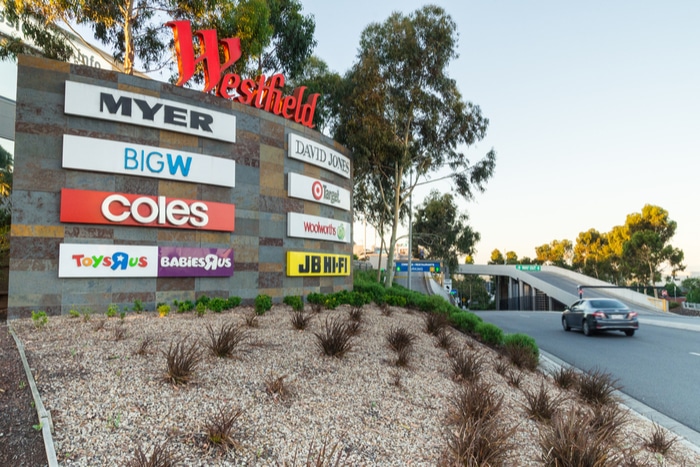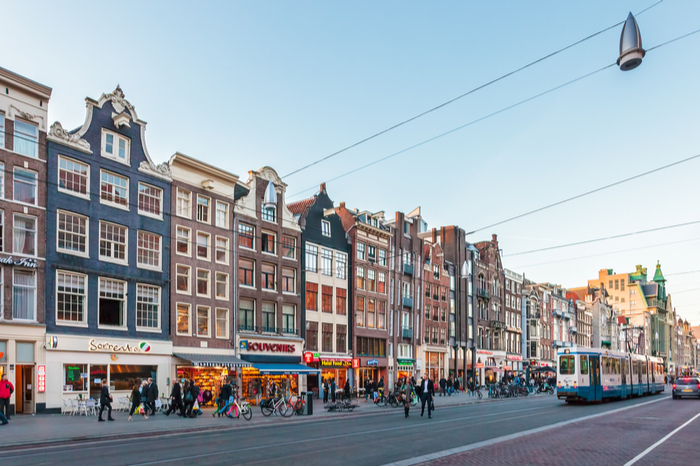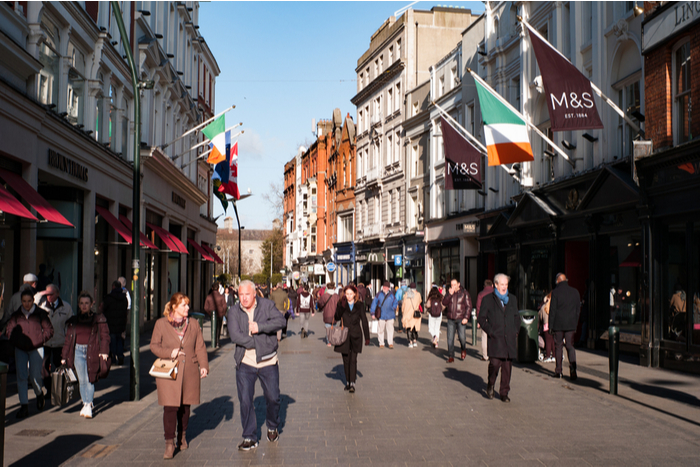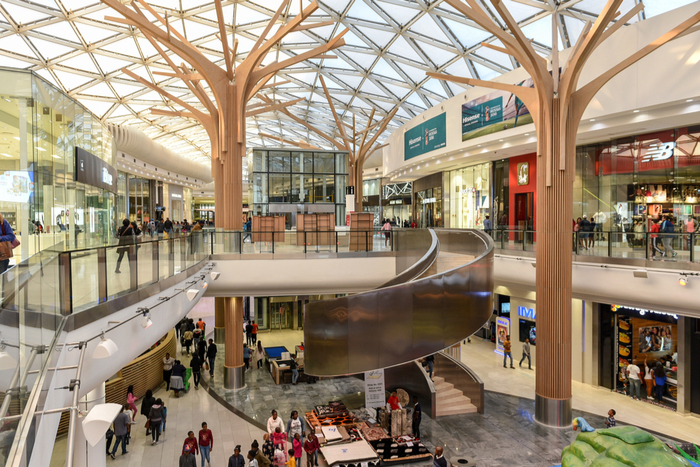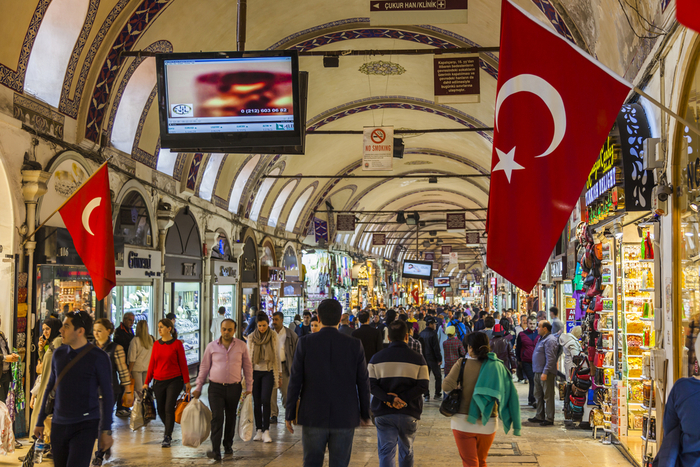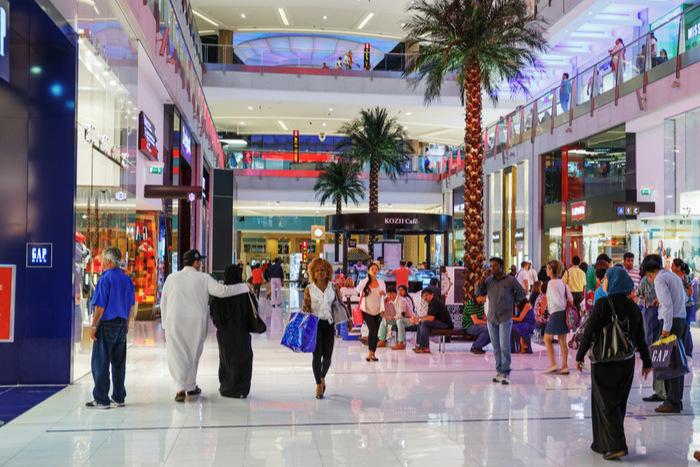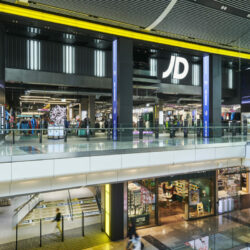It may seem isolated and home to a somewhat small population given its huge expanse, but one can argue that Australia’s retail industry has all the hallmarks of a powerhouse.
With a relatively stable economy – it has a mining boom to thank for allowing it to buck much of the fallout from the global recession in 2008/09 – Australia is dominated by a plethora of home-grown retailers that sit comfortably alongside well-known foreign brands.
Some of the Aussie retailers may already be familiar to Brits: Typo, Smiggle, and Lovisa, high-end labels RM Williams, Honey Birdette and Zimmerman, online retailer MySale and even the ill-fated DIY chain Bunnings all hail from Down Under. Westfield is also of Australian origin, starting off as a humble mall in Sydney’s western suburbs in 1959 before becoming the global shopping centre giant it is today.
However, only three Australian firms were listed in the 2018 Global Powers of Retailing report, which is compiled by Deloitte and ranks 250 retailers of all types based on total revenue. Of the three, Wesfarmers and Woolworths – which is very different to the British retailer of the same name that collapsed 10 years ago – are the most dominant, ranking 21st and 23rd respectively. The third retailer is electronics and entertainment chain JB Hi-Fi, which entered the power list for the first time at 218, and subsequently marked the first time that more than two Australian firms featured on the list.
“We don’t have that tradition of high street shopping.”
Dr Louise Grimmer, a retail academic from the University of Tasmania, told Retail Gazette that the majority of Australian retailers could be classified as small-to-medium businesses. This could explain why its footprint on the global power list is minimal, coupled with the fact that its population of 24 million means its market is relatively small. Despite this, Australia still presents itself as an attractive opportunity for international retailers.
H&M, Zara, Uniqlo, Foot Locker, Fossil, Aldi, Swarovski, Guess, Sunglass Hut, Victoria’s Secret and Ikea have all firmly established themselves there. Of course, British favourites like Reiss, Clarks, Specsavers, Superdry, Burberry and Karen Millen have also enjoyed success Down Under. Asos started trading in Australia in 2011, followed shortly by Arcadia when it brought Topshop to the continent for the first time. However, none have grown as fast as JD Sports, which has opened an impressive 15 stores since it first entered the Australian market less than two years ago.
So how exactly does Australia’s retail industry compare to that of its UK cousin?
“I would describe the climate as stable for the majority of retailers but there is also an air of caution for some sectors at the moment,” Grimmer said.
“In the last couple of years the Australian retail industry has witnessed the closure of a number of established and well-known apparel and accessories retailers.”
She added: “A number of these retailers, particularly men’s fashion, could be described as ‘middle of the road’ brands which were slow to adapt to changes in the digital economy and have been stuck in ‘bland land’.
“These retailers were not able to differentiate themselves from the competition and coupled with too many stores and high operating costs were just not able to respond to what consumers are looking for.
“We have a crowded market, particularly for mid-level fashion, and retailers are having to respond to various other factors including rental stress.”
While the Australian retail industry may clearly share some similarities with the UK, when it comes to consumers and online spending habits – the differences are evident.
To begin with, Grimmer says Australia did not inherit the high street culture from the UK. This is evident in the large number of suburban shopping centres – especially Westfields – that operate in Sydney, Melbourne, Brisbane, Adelaide and Perth. These cities alone are home to almost 60 per cent of Australia’s total population.
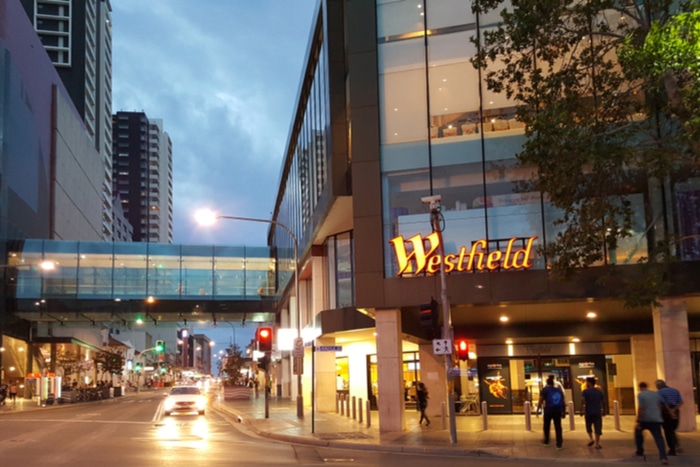
“We don’t have that tradition of high street shopping,” Grimmer told Retail Gazette.
“Most of us have, at least in urban and city areas, have grown up with suburban strips and shopping centres as well as [city centre] shopping.”
Grimmer added that Australians don’t shop online anywhere near as much as their counterparts in the UK or the US.
“Only around eight per cent of all retail spend is online and only three per cent is spend on online grocery shopping – these figures are much lower than those in the UK and the US,” she said.
“We love our smartphones and increasingly we are using them for shopping and for accessing product and store information.
“We now use mobile phones more than any other electronic device such as laptop or tablets to search for information about retailers, compare prices and buy products but overall our appetite for online shopping could be described as modest.”
Australia’s crowded retail market, as Grimmer already pointed out, is particularly evident in the mid-market fashion sector. On the flipside, the lack of diversity in department stores and grocers may make it seem like a highly concentrated industry.
The country’s two supermarket giants are Coles, which was majority-owned by Wesfarmers up until late 2018, and Woolworths. Their closest competitors are German discounter Aldi and the Australian-based variant of US grocer IGA. When it comes to department stores, Myer and David Jones dominate, while value department stores Target, K-Mart – both different to those in the US – and Big W are also common. Target and K-Mart are owned by Wesfarmers, while Big W falls under Woolworth’s umbrella.

“In Australia we have one of the world’s most concentrated supermarket industries with Coles and Woolworths in a fierce battle with one another,” Grimmer said.
“They represent around 70 per cent of grocery spending but we have seen Aldi and Kaufland enter the market as well as rumours of Lidl.
“Parent companies Wesfarmers and Woolworths really have a hold on Australian grocery shoppers because they also own a range of other retailers covering petrol, hardware, [alcohol retailers], gambling, and more.”
She added: “Australians are still getting used to Aldi, I think. Their stores are not in every state in Australia, but I think they will be an important player in the supermarket sector in the near future.”
Grimmer said the trading conditions facing department stores in Australia echoes some of the trends found in the UK and the US. She said one of the reasons for this was their “incredibly slow” uptake in online.
“They didn’t invest in ecommerce early enough and many customers simply started shopping online with other retailers and never returned,” she explained.
“We’ve seen huge efforts by department stores in the last couple of years to try and address this, but I think due to their size, the fact that they are therefore not as nimble as other retail formats and the fact that consumers appear to be seeking out more specialised retail offerings, have all contributed to a world of pain for department stores.
“I think there is still a future for the department store format in Australia and I would hate to see this sector disappear, but I think it will be transformed.”
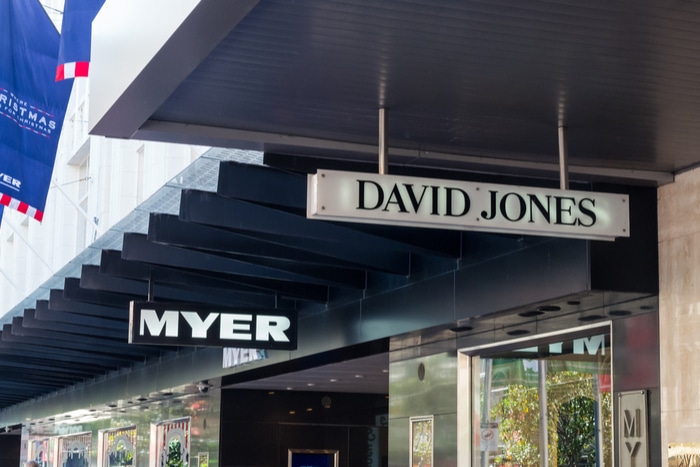
In order to ensure Australia’s small department stores sector has that future, Grimmer said they needed to rationalise their stock, look strategically at their brand offering, and improve their customer service.
“We are seeing more and more customers interested in private label brands (PB) and this is one area where department stores can compete,” she told Retail Gazette.
“Some have been very successful in this area but in recent years I don’t think department stores have done a great job in marketing their private label brands.
“PBs are a terrific way to differentiate from the competition and the appetite from customers for PBs is growing and this is being reflected in the number of PB products being developed in particular by the large supermarket chains in Australia.
“If you think of Aldi, around 70 per cent of their products are PB and this appeals to a significant cohort of shoppers.”
Grimmer said another common trend affecting Australian retail is the cycle of continuous discounting throughout the year, meaning consumers are becoming accustomed to never paying full price. This therefore erodes margins and retailers need to sell more stock to compensate.
The overall cost of doing business also continues to rise for Australian retailers, which has prompted a number of them reduce their store sizes and/or open smaller stores in more locations to try combat the high rents in city-centre locations or shopping centres.
Despite the relatively stable economy and fairly strong Australian dollar, Grimmer said the other pertinent issue for the country’s retail sector is stagnant wage growth.
“Over the last five or more years, wage growth in Australia has remained stagnant and this has had a significant impact on discretionary household spending and consumer confidence,” she told Retail Gazette.
“In turn, consumers are being cautious with their finances which is having a flow-on for retail spending.
“In Australia we have one of the world’s most concentrated supermarket industries with Coles and Woolworths in a fierce battle with one another.”
“With wages not keeping up with the cost of living, this is an important economic issue and as Australians will vote for the next government some time in March this year, wage growth, household spending and inflation are important issues for whichever party is successful in the general election.”
Perhaps one of the most interesting aspects of Australian retail is the recent entry of Amazon just over a year ago, in December 2017. Although Australians were able to shop with the online retail giant before then, they were slugged with international shipping fees. Grimmer recalled there being a great deal of build-up in the media for Amazon’s Australian launch, but since then, things seem to have fallen flat.
“Despite all the hand-wringing and dire predictions about the end of Australian retail once Amazon came to town, what we’ve actually seen is that Amazon hasn’t really disrupted the industry in Australia and for most retailers it is business as usual,” Grimmer explained.
“There has been a level of disappointment from customers and from small businesses listing on the Amazon marketplace.
“Some of the reasons it took so long for Amazon to enter the Australian market is that we are actually a very small market, especially when compared with the UK, the US and some of the newer markets that Amazon is targeting such as India.”
She added: “Apart from the concentrated city populations in Sydney and Melbourne, the rest of the population is dispersed across the continent, which makes things like setting up distribution centres, engaging in effective logistics and providing super fast delivery, real challenges for companies like Amazon in Australia.”
In news that may surprise no one, soon after Amazon launched Down Under, it went head to head with the Australian government over the GST – the local equivalent to VAT – on overseas goods. In retaliation, Amazon geo-blocked Australian customers by only allowing them to shop on the Australian site.
“Needless to say this didn’t go down well with many Australian customers who had been looking forward to shopping on the international site,” Grimmer said.
“One year after their launch we are now seeing plethora of retail experts and consultants giving their verdict on whether or not Amazon has been a disruptor, as originally predicted, or a disappointment.
“The consensus is that they have been somewhat of a disappointment and certainly haven’t disrupted the Australian retail landscape in the way that many thought. Daily visits to the Ebay website far outstrip those made to Amazon.”
“Amazon hasn’t really disrupted the industry in Australia and for most retailers it is business as usual.”
While only around eight per cent of retail is online, Grimmer said this number was not growing significantly, which indicated that people still wanted to shop in physical stores. But like their UK counterparts, consumers want to be able to engage with retailers across different channels. She pointed to JB Hi-Fi in being a shining example of multichannel success, along with fellow Australian retailers SuperCheap Auto and Mecca.
“These are retailers who have embraced omnichannel but they are also super aware of providing an in-store experience for their customers,” Grimmer said.
“SuperCheap Auto, for example, have created a customer experience superstore in Penrith, Sydney. This store is all about the shopping experience and features a number of in-store installations and uses technology in really clever ways.
“They have also embraced click-and-collect and have really narrowed the pick-up time for customers ordering online and this of course is designed to compete with online sellers Ebay and Amazon.”
However, when it comes to smaller retailers, Grimmer expressed concern, especially since the majority of retail businesses in Australia are small-to-medium sized. She said many of their operations meant owners or managers didn’t have the skills or time to invest in digital technology in order to keep up with consumers’ changing behaviours.
“Ongoing research that I conduct at the University of Tasmania confirms that around one third of small retailers still don’t have an ecommerce offering,” she told Retail Gazette.
“This is a very worrying finding and I believe that federal and state governments have a role to play in educating and assisting small retailers to adapt to the change in consumer buying behaviour, particularly through providing assistance with ecommerce and digital marketing.
“Australia is certainly not suffering the same high street woes as the UK but I think it’s really important that we get on the front foot with making sure that we are future proofing our retail industry so that it can be as resilient and buoyant as possible.
“I don’t think we can afford to be complacent.”
She added: “Small independent stores are really the backbone of local communities and local economies and if we are to have a healthy retail industry in Australia it is imperative that we have a good mix of large and small stores.
“If we lose small operators our shopping areas will just become cookie cutter strips with the same shops to be found anywhere in the world.”
Next month, Market Snapshot will go to China. Do you have some thoughts, facts or figures you’d like to share on China’s retail industry? Send an email to [email protected]
Click here to sign up to Retail Gazette‘s free daily email newsletter

